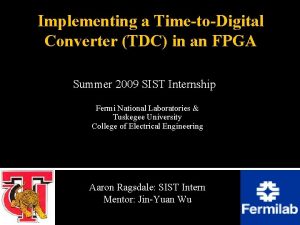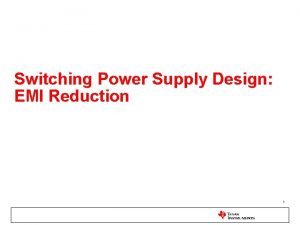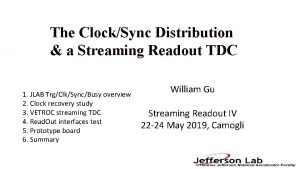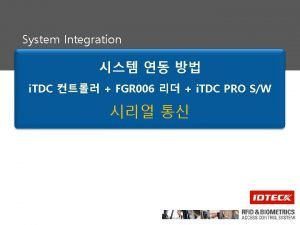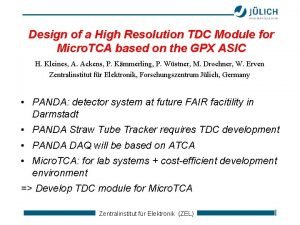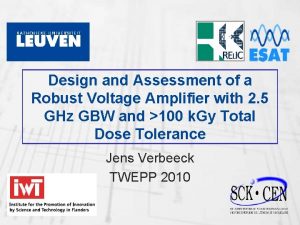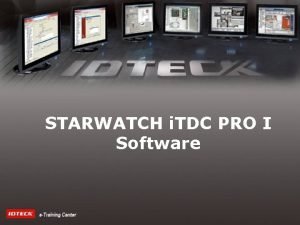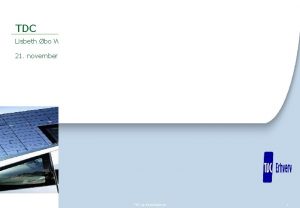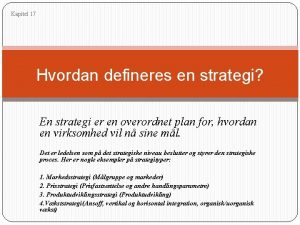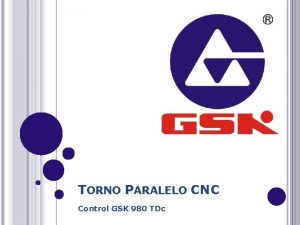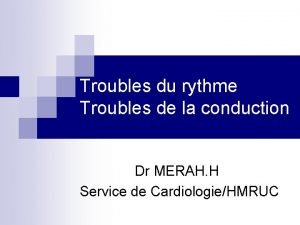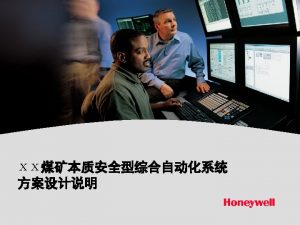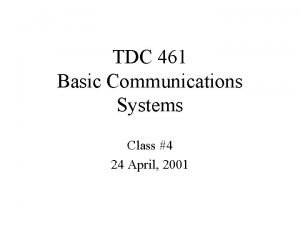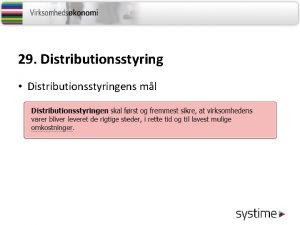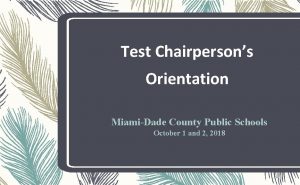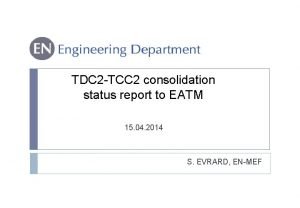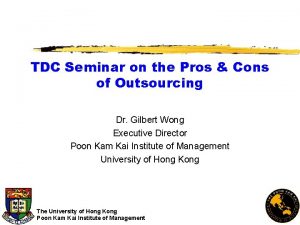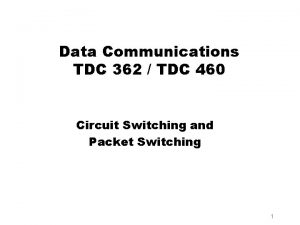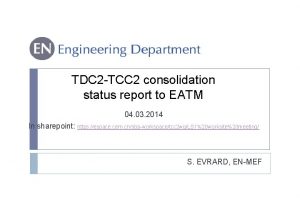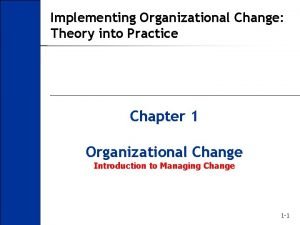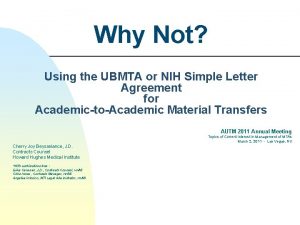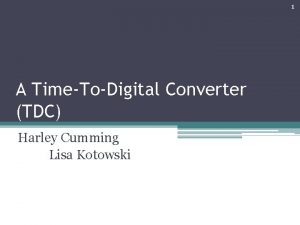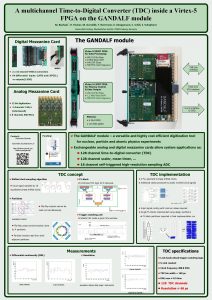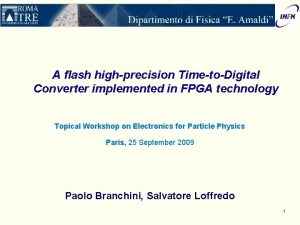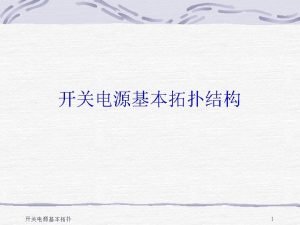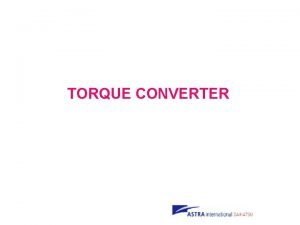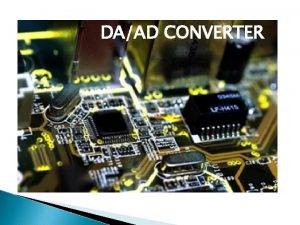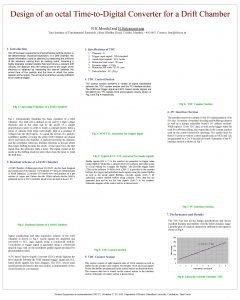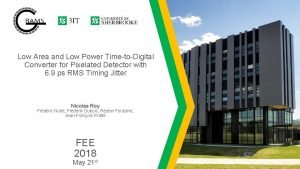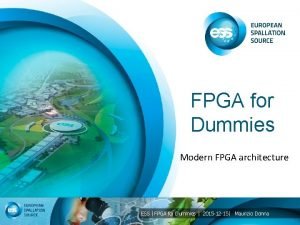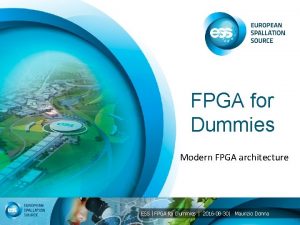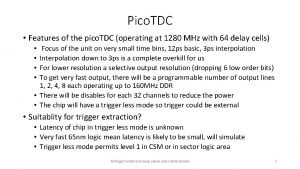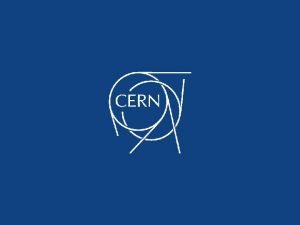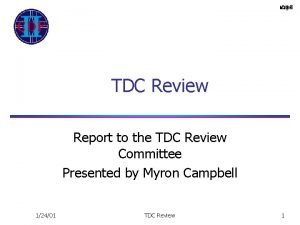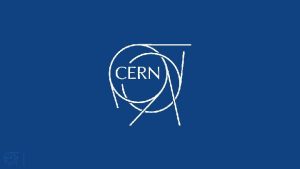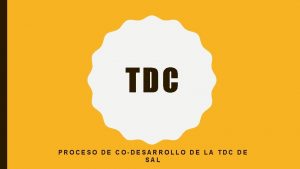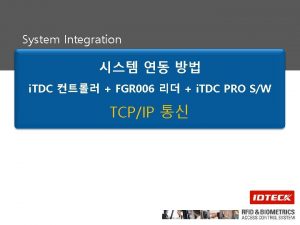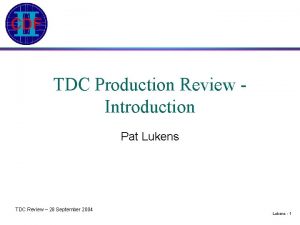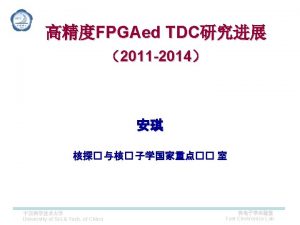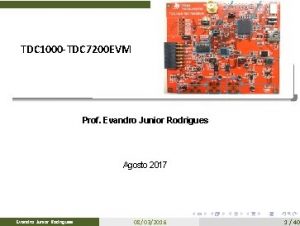Implementing a TimetoDigital Converter TDC in an FPGA




























![References [1] A. Amiri, A. Khouas & M. Boukadoum, “On the Timing Uncertainty in References [1] A. Amiri, A. Khouas & M. Boukadoum, “On the Timing Uncertainty in](https://slidetodoc.com/presentation_image_h/7578e48501e15a3d8e709abb78743cda/image-29.jpg)
- Slides: 29

Implementing a Time-to-Digital Converter (TDC) in an FPGA Summer 2009 SIST Internship Fermi National Laboratories & Tuskegee University College of Electrical Engineering Aaron Ragsdale: SIST Intern Mentor: Jin-Yuan Wu

Overview �Objective �Testing �Introduction �Conclusion �Hardware �Acknowledgements �Firmware �References

Objectives �Build an electronic board that utilizes two Field Programmable Gate Arrays(FPGA): v. Time to Digital Converters(TDC) FPGA- Contains the TDC itself as well at Data Acquisition (DAQ) circuits. v. Data Acquisition (DAQ) FPGA- interfaces the TDC FPGA, serial port, Ethernet connection, as well as other important components �Implement firmware that can be used in many practical applications

Introduction What are Field- Programmable Gate Arrays? (FPGAs) FPGAs are semiconductor devices composed of programmable logic components called “logic blocks” that can be configured and re-configured to perform complex combinational functions.

Introduction A Time to digital converter (TDC) is a device that converts signals of pulses into a digital representation of time.

Introduction �The � TDC FPGA has a wide range of applications: High energy Physics Experiments �Time-of-Flight �Fermilab: (TOF) Main Injector Particle Production Experiment

Introduction �MIPP is an experiment studying hadronic flavor particle production at Fermilab. The experiments will cover 1 to 120 Ge. V/c on multiple targets (liquid Hydrogen, Minos targets and various nuclear targets including Uranium) for six beam species (pion, kaon, protons and their antiparticles). �Open geometry spectrometer used to study hadron production. � Hadronic fragmentation – test scaling law of particle fragmentation

Time of Flight TIME-OFFLIGHT

Time of Flight AMP CARDS TDC CARDS

Hardware �Altera Cyclone II FPGA EP 25 Q 208 �Altera Cyclone II FPGA EP 2 C 8 T 144 �Ethernet Port: DB 9 Converter �Serial Port: RJ-45 connector �On-Board Signal: Crystal Oscillator (25 MHz) �External Signal: BNC Connectors �Clock: Crystal Oscillators (50 and 25 MHz) �Configuration Chip �Serial Connector to USB Blaster

Serial Port TDC FPGA Power Supply BNC Connectors USB Blaster Connection Configuration Chip Ethernet Chip DAQ FPGA Crystal Oscillator Ethernet Port

Firmware: § Schematic-based entry § Altera Quartus II Software

TDC FPGA Firmware �There were two major problems: � The temperature and the voltage power supply were causing uneven bin widths. �The wide bins would then limited the time resolution and precision of the TDC.

Carry Chain � The Cyclone II utilizes a carry chain adder as it delay chain. � The registers recodes each bit of the adder result, and a priority encoder follows the array. Questions!? Calibrate: Temperature/Voltage � Clock too fast? / too slow? � Synchronizing Input � Timing Reference �

TDC FPGA Firmware 1. 2. Widths of bins are different and varies with supply voltage and temperature. Some bins are ultra-wide due to LAB structure

Auto- Calibration Longer delay line � Some signals may be registered twice at two consecutive clock edges. � The two measurements can be used: – to calibrate the delay. – to reduce digitization � errors.

Auto-Calibration � It provides a bin-by-bin calibration at certain temperature. � It is a “turn-key” solution. � A DNL histogram is booked in the FPGA internal memory. Once all hits are booked into the histogram, the lookup table (LUT) is integrated from the DNL histogram so that it outputs the actual time of the center of the addressed bin.

Wave Union Launcher In CLK Wave Union Launcher . � The wave union launcher creates multiple logic transitions after receiving a input logic step

Wave Union Launcher � After arrival of the input, the wave union launcher B starts to oscillate launching a wave union into the carry chain. The carry chain/register array structure takes 16 snap shots of the oscillation bit patterns in 16 clock cycles at 400 MHz. The phase of the oscillation is determined by the arrival time of the input signal. Then in the 16 snap shots, the locations of the logic transitions can be utilized to compute the arrival time of the input signal to a higher resolution through the processing block “Sum. Hit. D”.

Wave Union Launcher

TDC FPGA Firmware � Ultra-Wide bins were eliminated

TDC FPGA Firmware � Distributing a Timing Reference � Once Time Stamp D 0 is detected by the decoder the time stamp counter (TS) and event counter (EV) are reset. � Each time the D 0 marker arrives the least bits of the TS should be 0.

DAQ FPGA Firmware � Interfaces the TDC FPGA, a Synchronous Dynamic Random Access Memory, the Serial Port, the Ethernet circuit and the VME bus, a flash memory and the USB connection. Element Configuration is essential

Testing �The firmware was downloaded successfully. �The next step was to test it.

Testing DAQ Counter as it collects data

Testing §The TDC FPGA was able to simulate and transmit raw data. §A histogram was displayed.

Conclusion �The Board functioned well. �This TDC FPGA is innovative in that it solved many problems prevalent in the previously developed firmware. Its new flexible firmware enables it to be utilized in many practical applications.

Acknowledgements �Jin-Yuan Wu, my Supervisor �Sten Henson �SIST Program Committee �Dianne Engram �Jamieson Olsen �Dr. Davenport �Kenie Moses
![References 1 A Amiri A Khouas M Boukadoum On the Timing Uncertainty in References [1] A. Amiri, A. Khouas & M. Boukadoum, “On the Timing Uncertainty in](https://slidetodoc.com/presentation_image_h/7578e48501e15a3d8e709abb78743cda/image-29.jpg)
References [1] A. Amiri, A. Khouas & M. Boukadoum, “On the Timing Uncertainty in Delay-Line-based Time Measurement Applications Targeting FPGAs, ” in Circuits and Systems, 2007, IEEE International Symposium on, 7 -10 27 -30 May 2007 Page(s): 3772 - 3775. [2] J. Song, Q. An & S. Liu, “A high-resolution time-to-digital converter implemented in field-programmable-gate-arrays, ” in IEEE Transactions on Nuclear Science, 2005, Pages 236 - 241, vol. 53. [3] M. Lin, G. Tsai, C. Liu, S. Chu, “FPGA-Based High Area Efficient Time-To-Digital IP Design, ” in TENCON 2006 IEEE Region 10 Conference, Nov. 2006 Page(s): 1 – 4. [4] J. Wu, Z. Shi & I. Y. Wang, “Firmware-only implementation of time-todigital converter (TDC) in field programmable gate array (FPGA), ” in Nuclear Science Symposium Conference Record, 2003 IEEE, 19 -25 Oct. 2003 Page(s): 177 - 181 Vol. 1.
 Fpga tdc
Fpga tdc Buck converter and boost converter
Buck converter and boost converter Clocksync
Clocksync Tdc systems integration
Tdc systems integration Tdc circuit
Tdc circuit Honeywell tdc 3000
Honeywell tdc 3000 Lidar tdc
Lidar tdc Tdc
Tdc Strutture logiche preformate
Strutture logiche preformate Tdc feriehuse
Tdc feriehuse Anlægsgrad betydning
Anlægsgrad betydning Gsk cnc 980 tdc
Gsk cnc 980 tdc Tdc cardiologie
Tdc cardiologie Honeywell tdc 2000
Honeywell tdc 2000 Tdc systems integration
Tdc systems integration Distributionsstyring
Distributionsstyring Tdc mdcps
Tdc mdcps Tdc 2
Tdc 2 Tdc seminar
Tdc seminar Tdc switch
Tdc switch Tcc tdc
Tcc tdc Implementing organizational change theory into practice
Implementing organizational change theory into practice Bert spector
Bert spector Implement strategies management issues
Implement strategies management issues Ch 7
Ch 7 Strategic business unit structure
Strategic business unit structure Crm vision statement examples
Crm vision statement examples Toyota brand hierarchy
Toyota brand hierarchy Ubmta signatories
Ubmta signatories Finance and accounting issues in strategy implementation
Finance and accounting issues in strategy implementation
